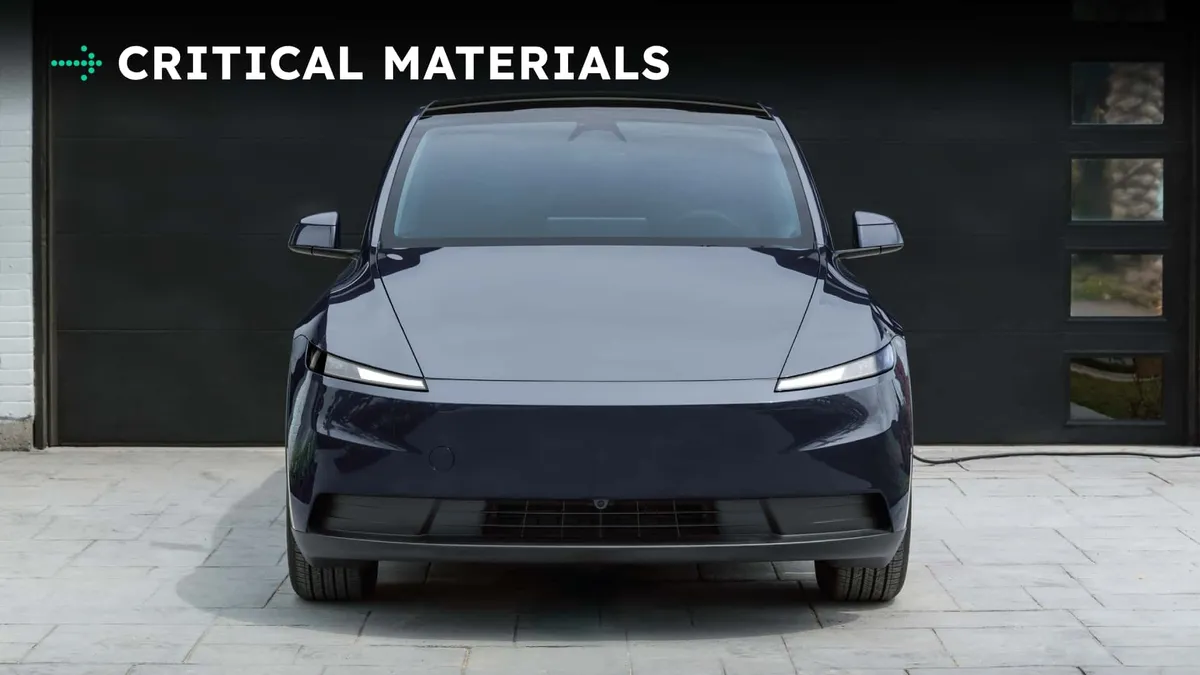
Yesterday, Tesla made headlines with the unveiling of its lower-cost Model Y and Model 3 electric vehicles (EVs). For many months, Tesla has been teasing the arrival of more affordable EV options, aiming to address sales challenges and rejuvenate excitement around the brand. However, the launch revealed existing models with perplexing omissions from their already limited features list, leaving many industry observers and fans underwhelmed. Welcome to Critical Materials, your go-to source for the latest developments in the EV sector. Today, we’ll delve into the aftermath of Tesla’s introduction of these so-called reasonably priced entry-level electric cars.
For a time, it appeared that Tesla’s stock price was on an unstoppable rise. Despite slow sales of the Cybertruck and Elon Musk's attempts to reclaim his status as the world's richest person through monumental corporate pay packages and stock transfers, shares of $TSLA remained resilient. Yet, the company is now grappling with a significant sales slump, particularly in Europe, where competitors like BYD are making significant inroads and capturing customers who would typically choose the Model 3.
While investors anticipated positive news from Tesla's announcement, the reality was far from it. Tesla's stock closed down approximately 4% yesterday, with only a slight uptick in the morning following the announcement. According to Barrons and Tesla bull Dan Ives from Wedbush, the new Model Y and Model 3 simply do not meet expectations. Ives noted, “The much-anticipated lower-cost models, which began production in North America in June 2025, are expected to launch in FY4Q25. However, these price points remain relatively high compared to other vehicles on the market.”
At their inception, the Model 3 and Model Y were unbeatable deals in terms of range and charging capabilities relative to price. However, the landscape has changed dramatically, with numerous competitors now offering 300-mile range EVs at more attractive price points. The Chevrolet Equinox EV and Hyundai Ioniq 5 are just two examples of vehicles that rival the Model Y and Model 3 specifications without the hefty price tag. Investors are becoming increasingly skeptical that these new models will attract enough customers to boost sales significantly. The cancellation of Tesla’s $25,000 entry-level car only exacerbates the situation, as Ives posited, hindering the company's ability to meet its ambitious quarterly sales goals.
Amid rising living costs, the term “shrinkflation” has become prominent, referring to brands repackaging products to cut costs without offering consumers a price reduction. The Model Y Standard seems to exemplify this trend, raising concerns about the quality of Tesla's offerings. Yahoo Finance has expressed skepticism about the Model Y, especially considering Tesla's ambitious plans to develop self-driving technology and AI. While there is a case for lower-priced products, the reality is that the public may perceive these models as lesser versions of their predecessors.
Critics argue that Tesla's introduction of these models may signal a shift away from its core identity as a car company. The slow and seemingly half-hearted rollout of the new models raises questions about whether Tesla can fulfill its technological aspirations in AI and self-driving capabilities. After all, Tesla has a history of failing to deliver on promises, which adds to the uncertainty surrounding its future.
The U.S. EV market has always prioritized affordability, but European consumers currently have access to a wider array of affordable electric options. The influx of Chinese manufacturers, alongside established European brands like Renault and Volkswagen, has made the EV landscape increasingly competitive. As a result, while the Model 3 and Model Y may stand out in the U.S., they are unlikely to make a significant impact in Europe, where sales are already under pressure.
According to Reuters, industry analysts project an influx of over 25 new EV models launching in Europe next year, highlighting the crowded market Tesla must navigate. While there is hope that the new Standard Model 3 and Model Y will spur momentum, experts warn that they will not revolutionize the market in the absence of a truly affordable vehicle, such as a €30,000 option.
The question of whether the new standard models will appeal to consumers remains open. On one hand, the absence of features like an FM tuner and the redesign of the glass roof may seem like a step backward. Conversely, the concept of a more basic yet technologically advanced EV is not without merit. Personally, I appreciate the return of the turn signal stalk, the cloth seats, and the manually adjustable steering wheel. What about you? Would you consider purchasing a Standard-trim Tesla? Should automakers adopt this trend of offering stripped-down versions of their vehicles?